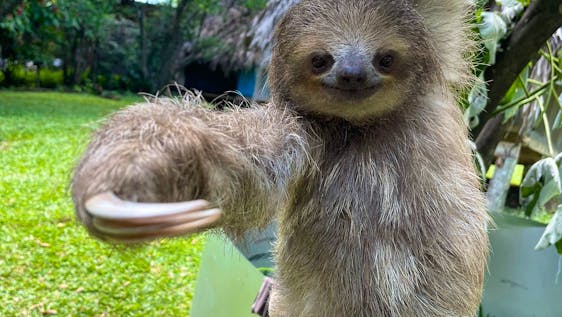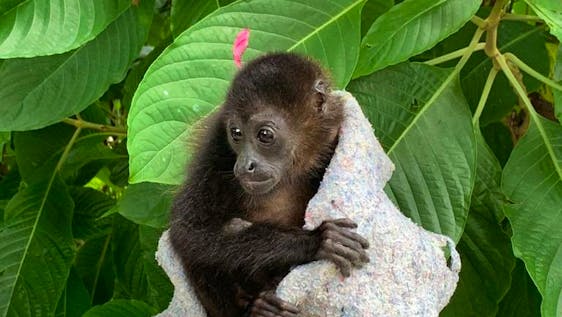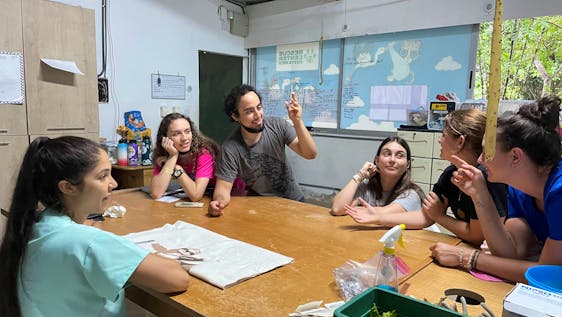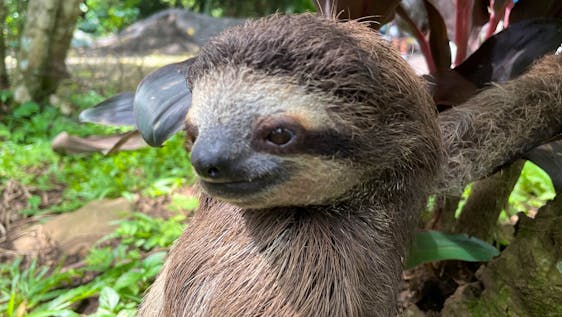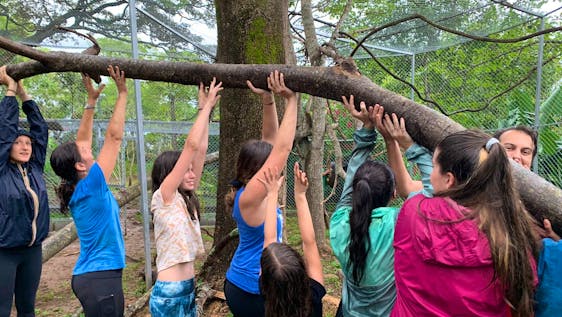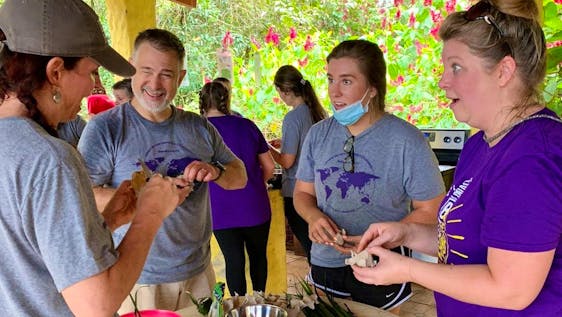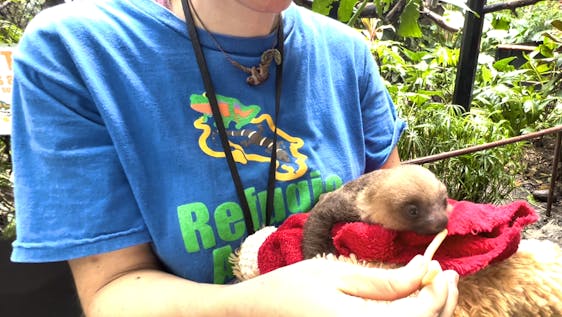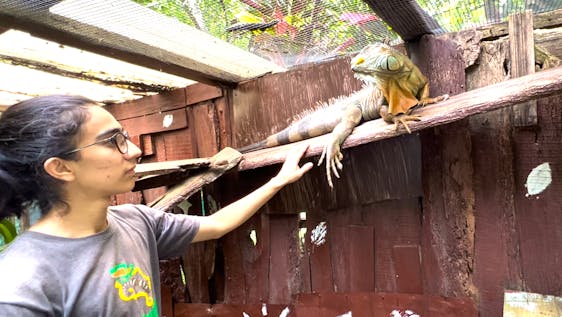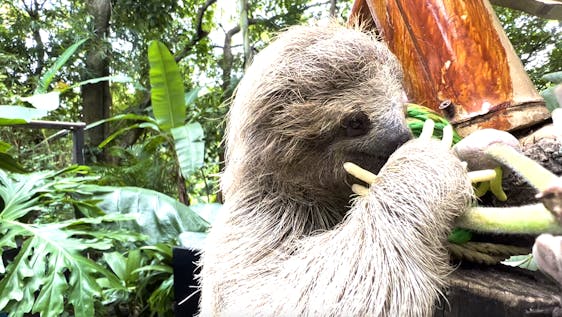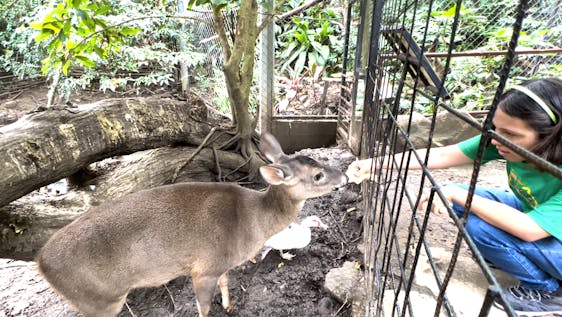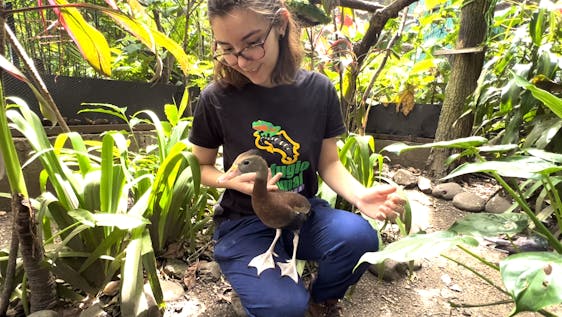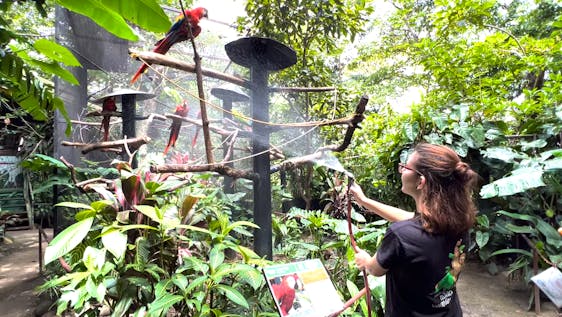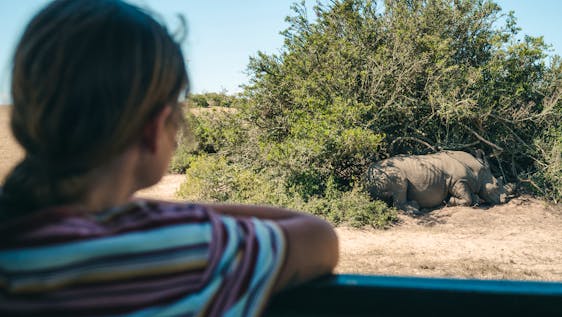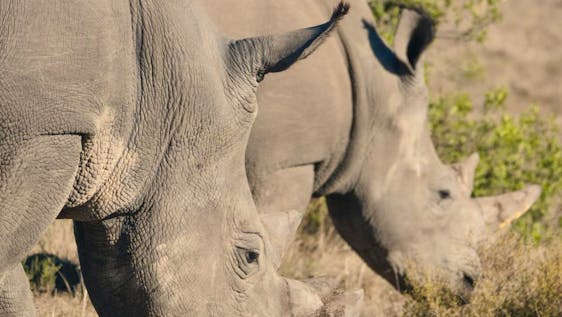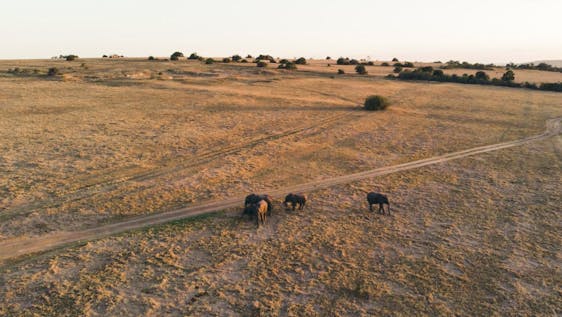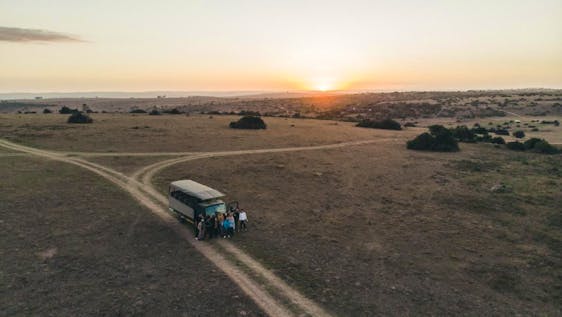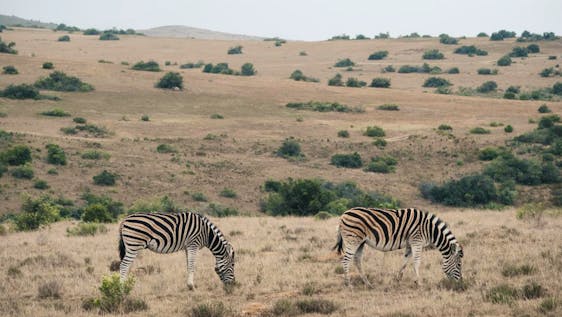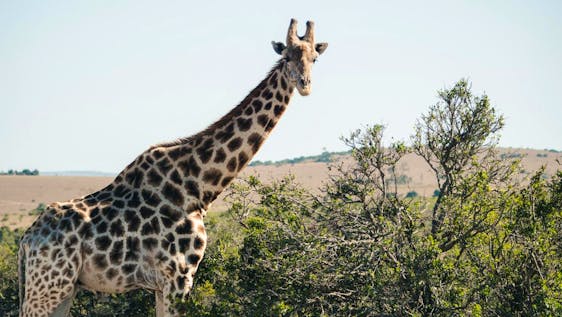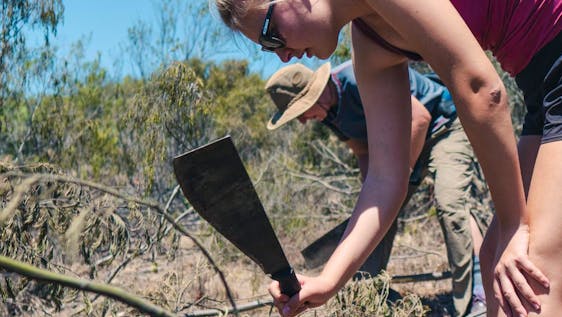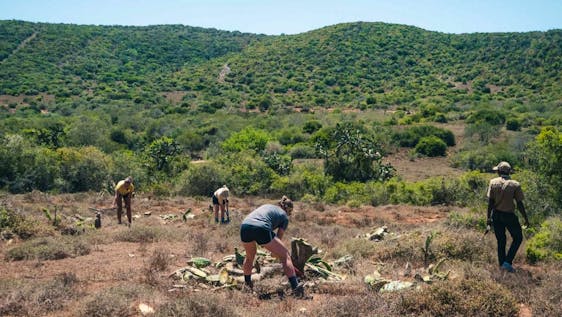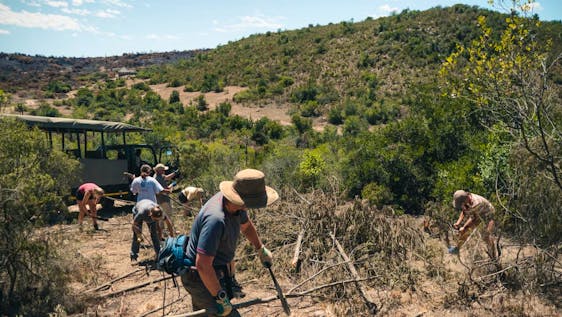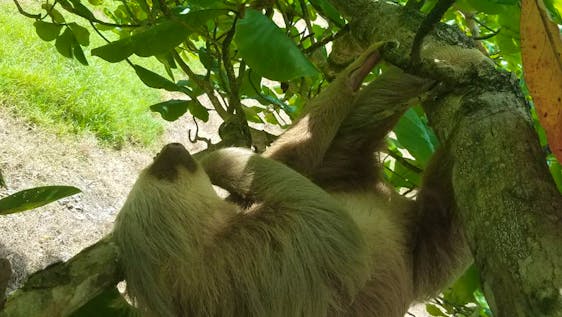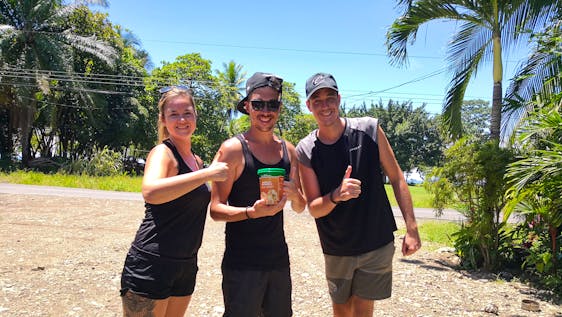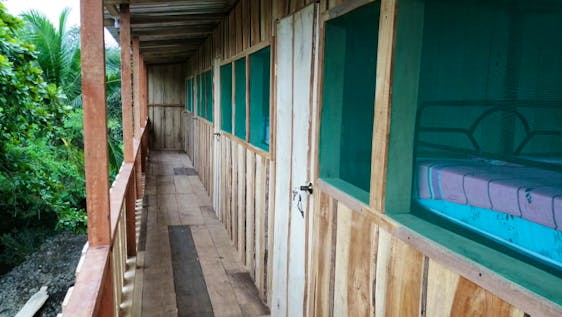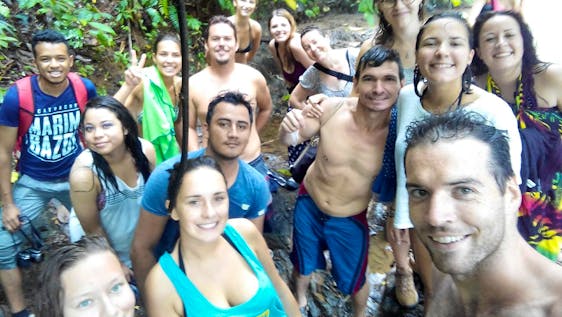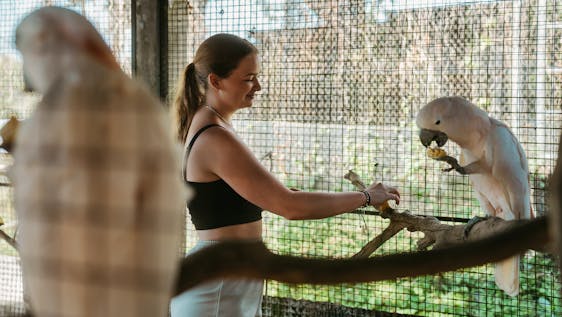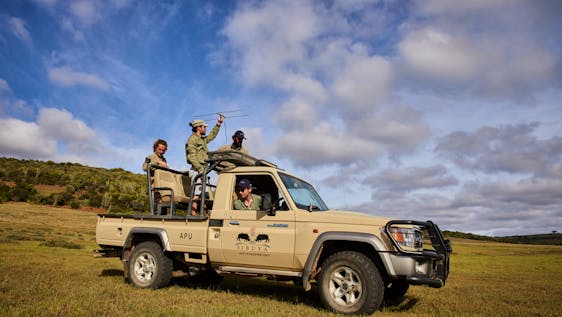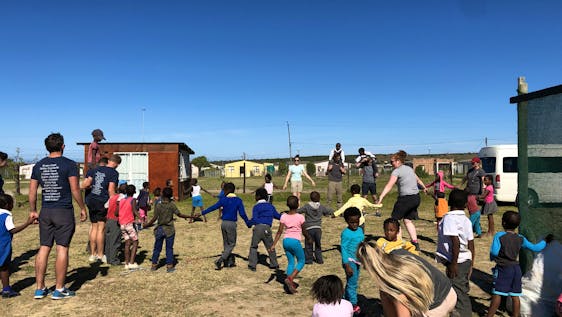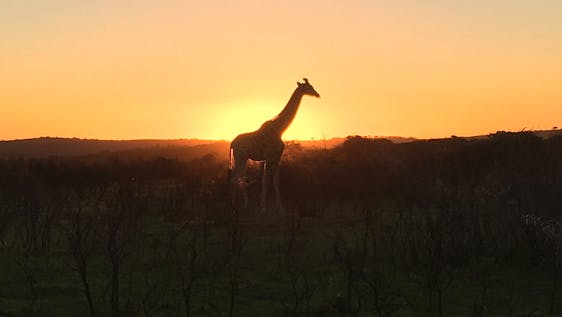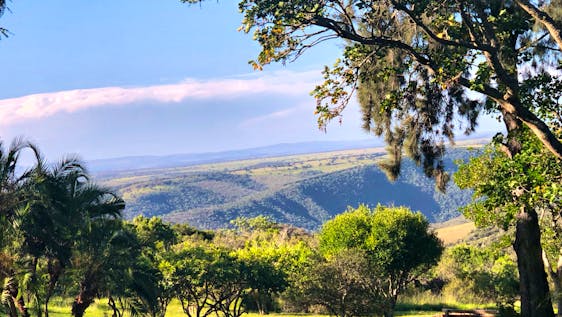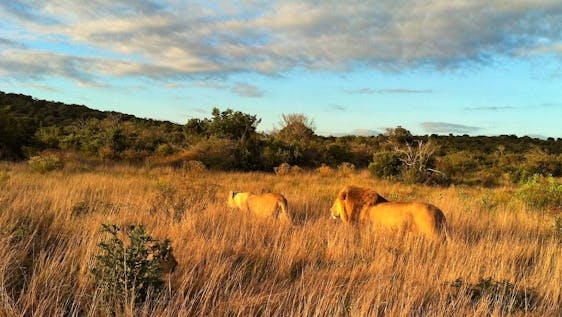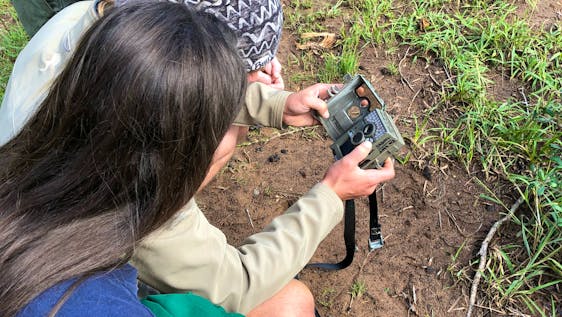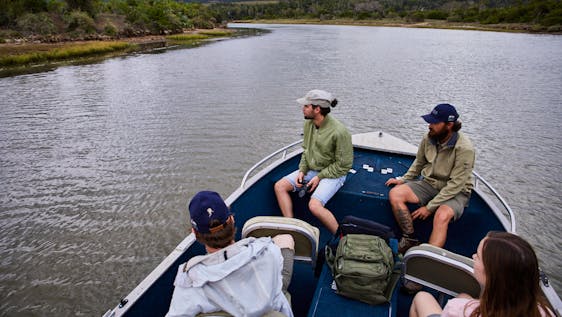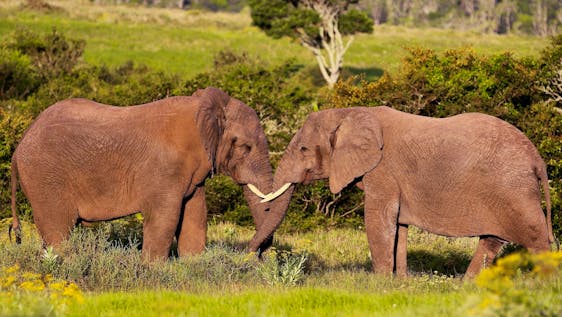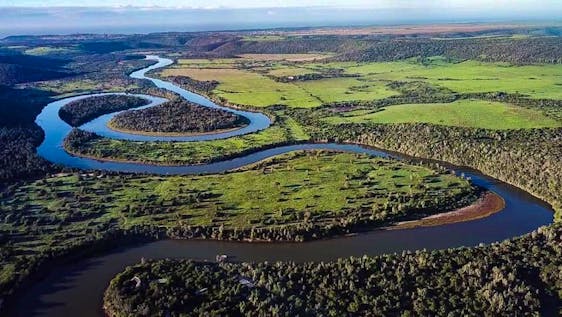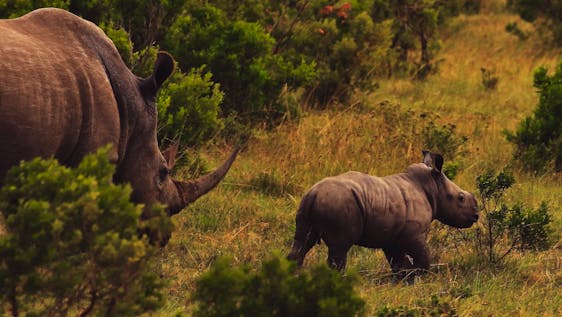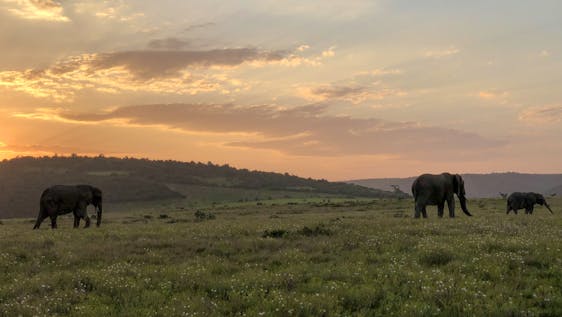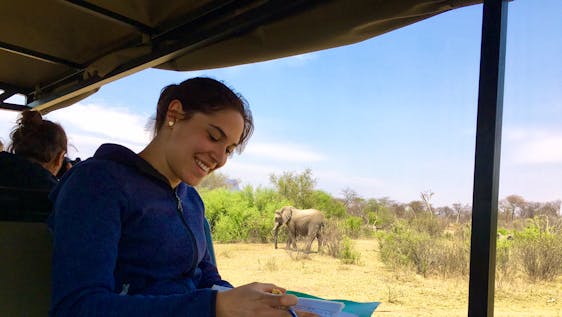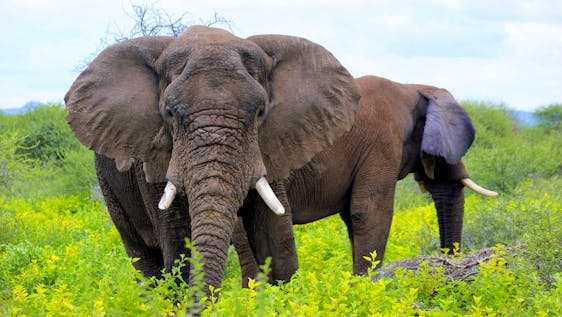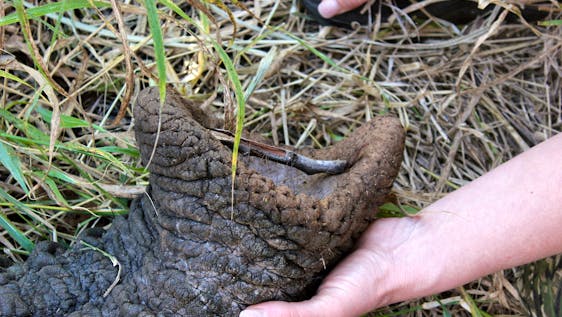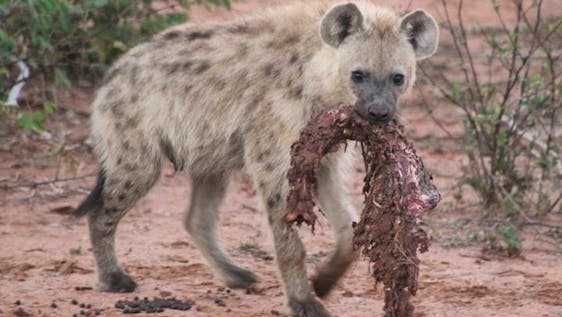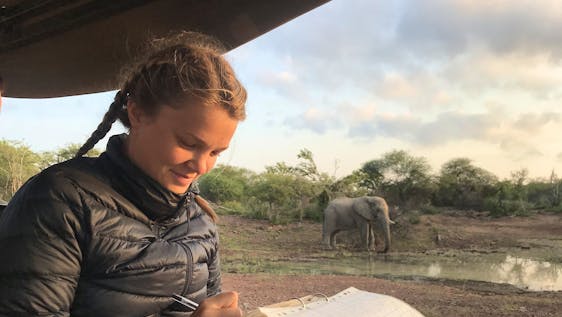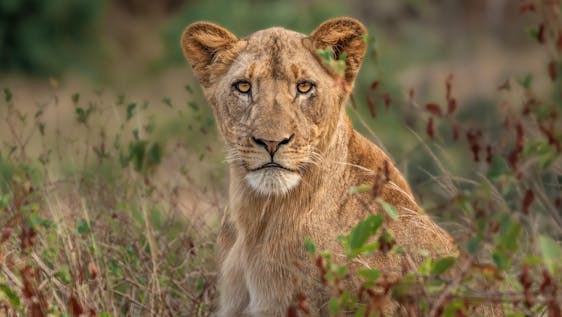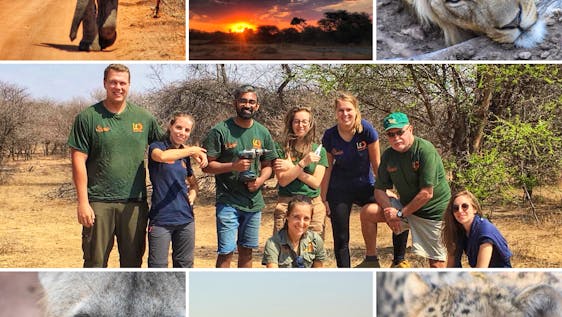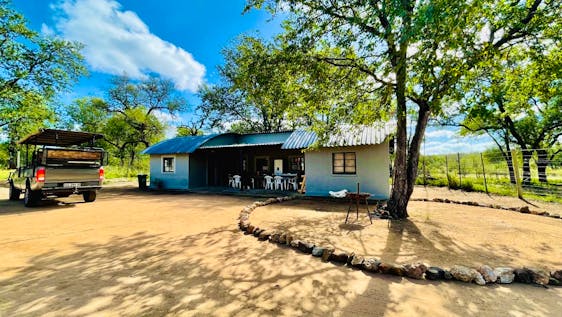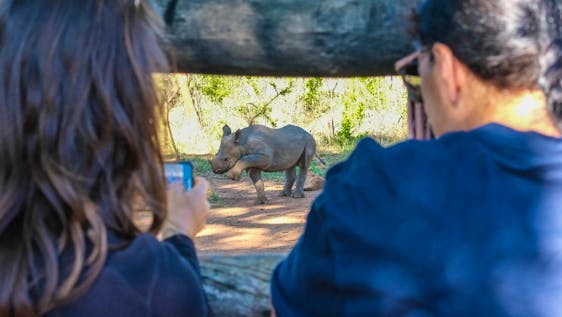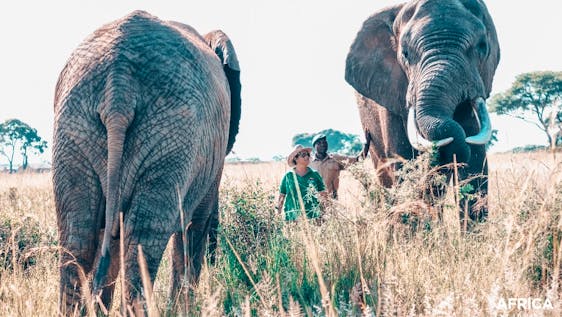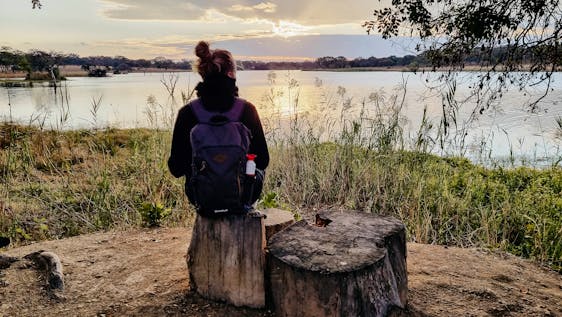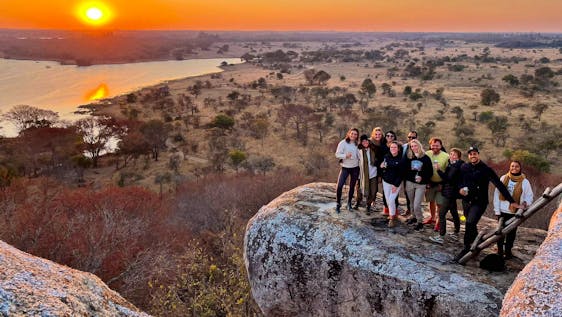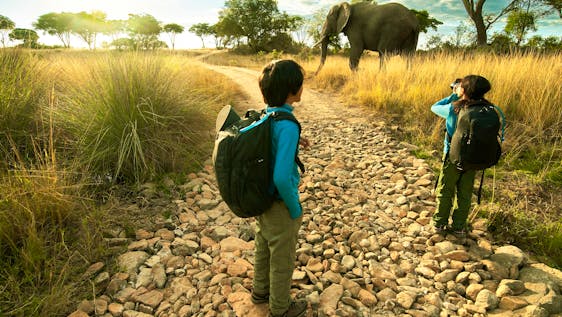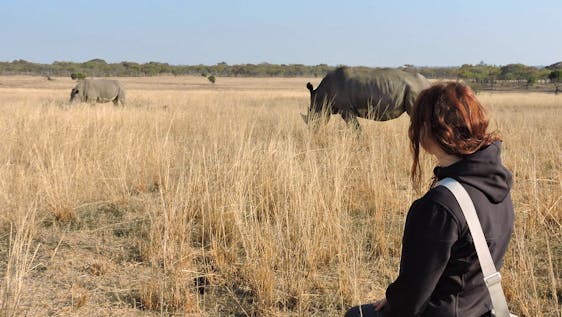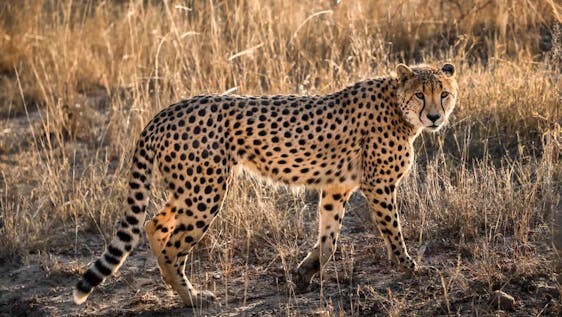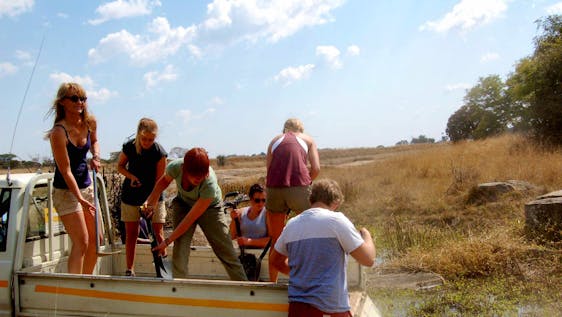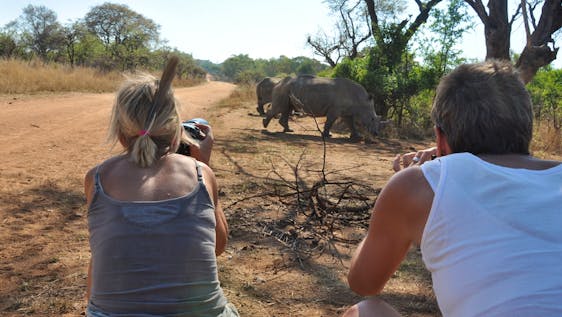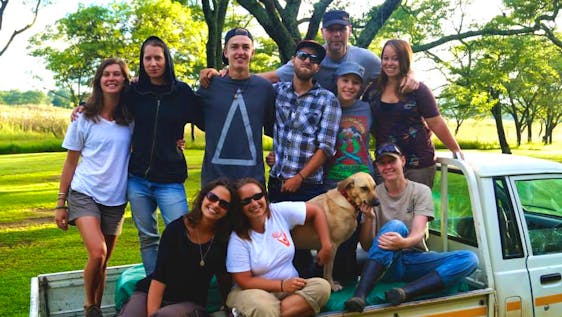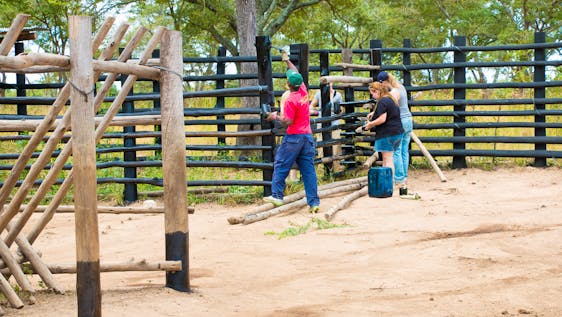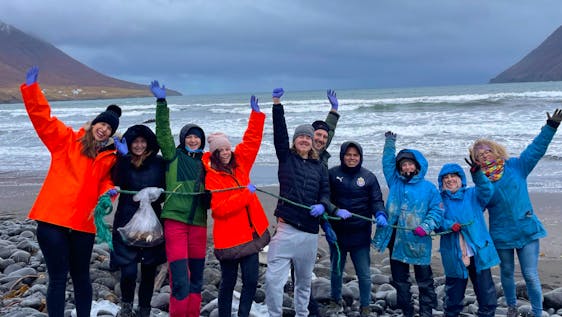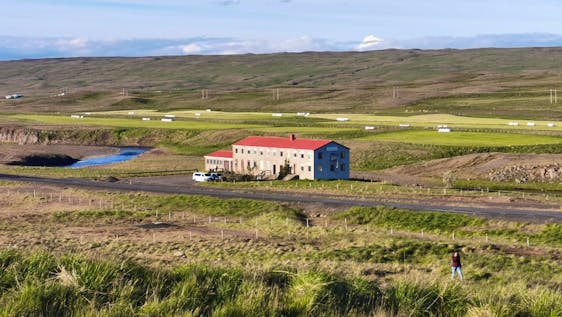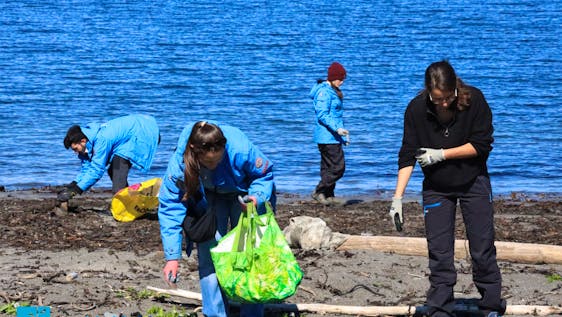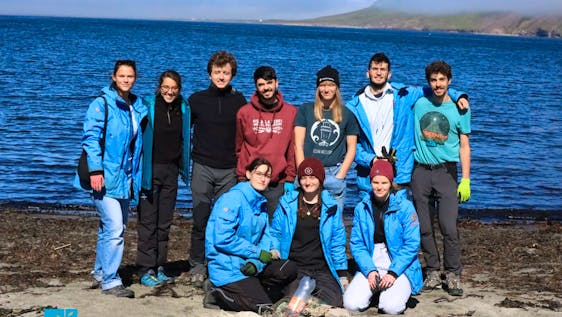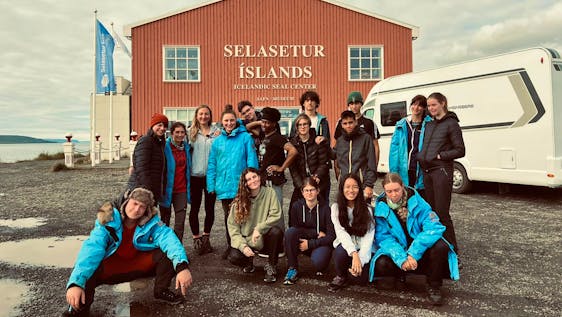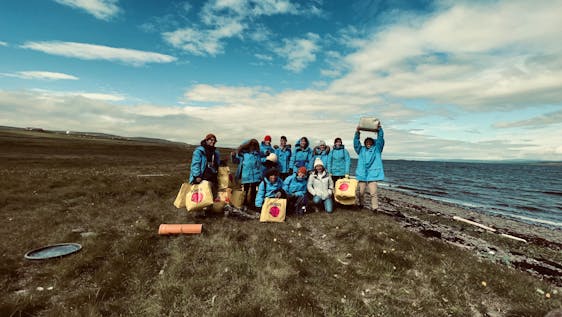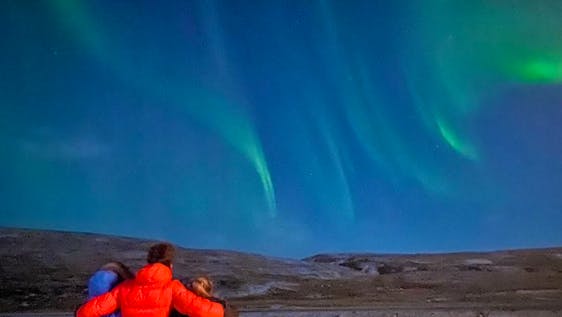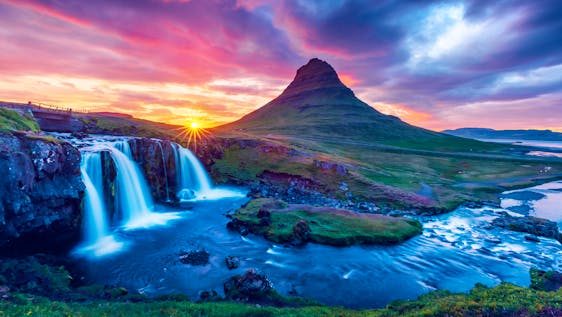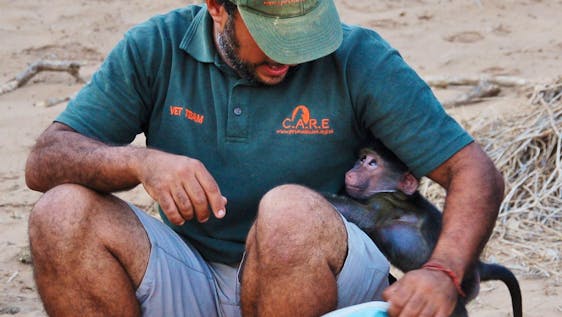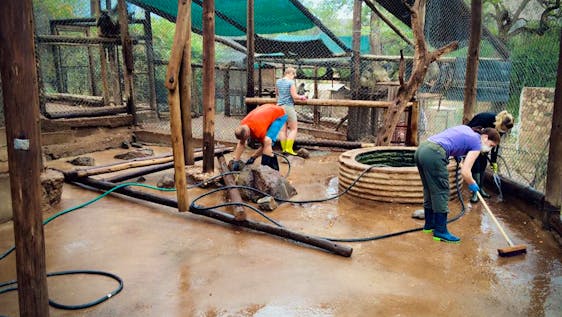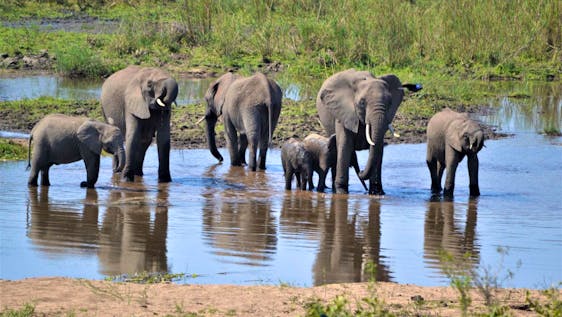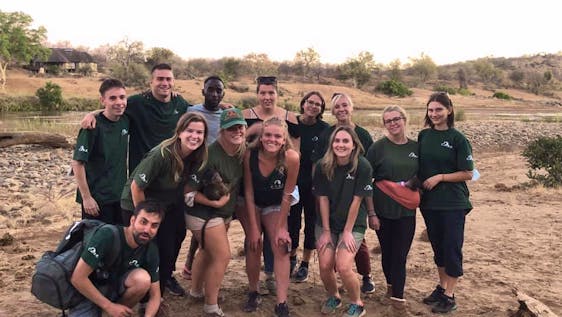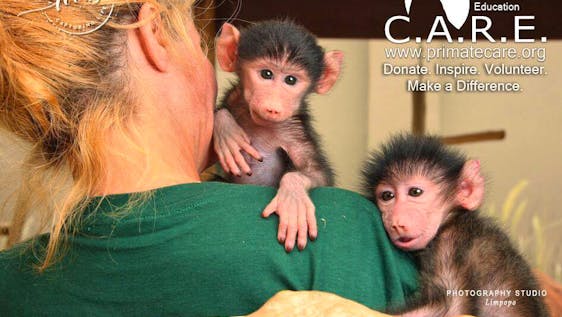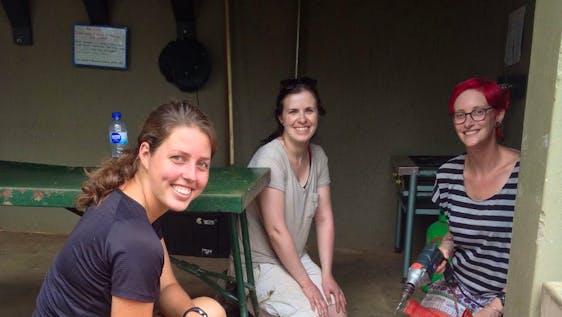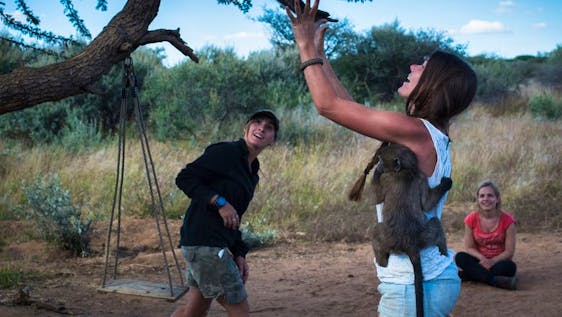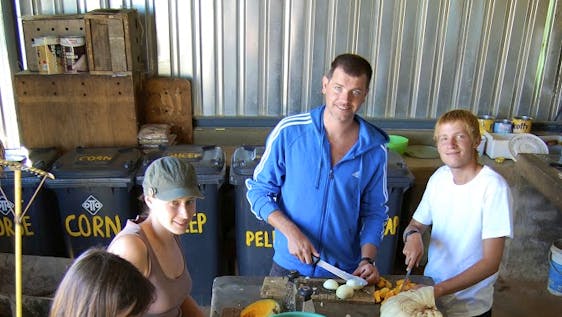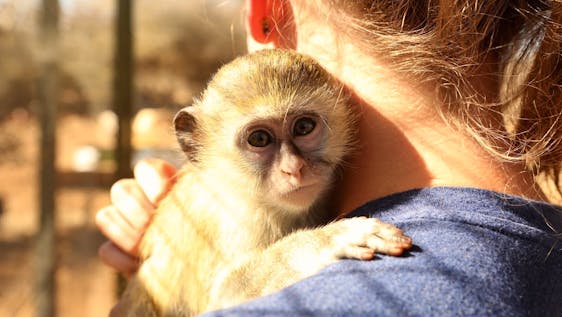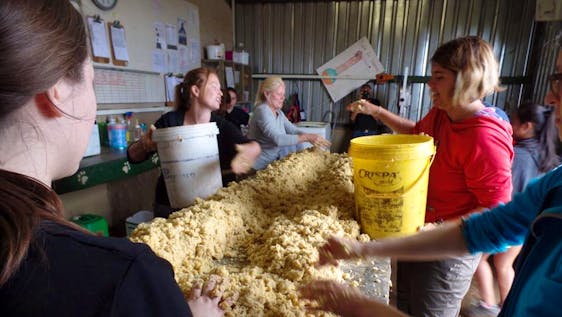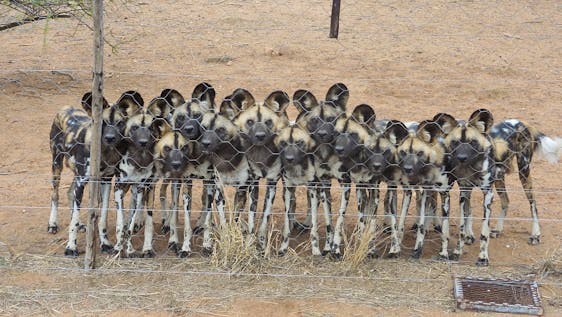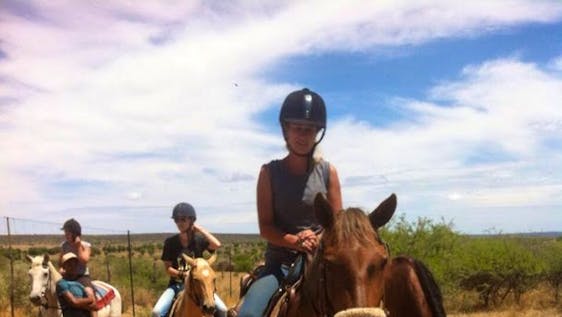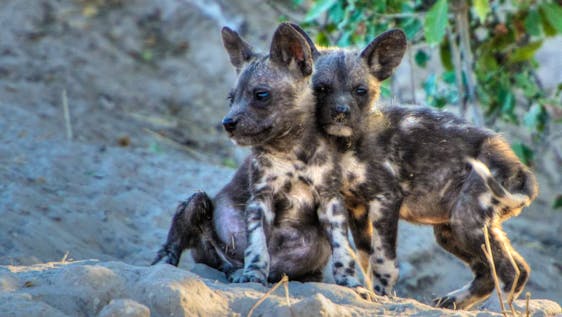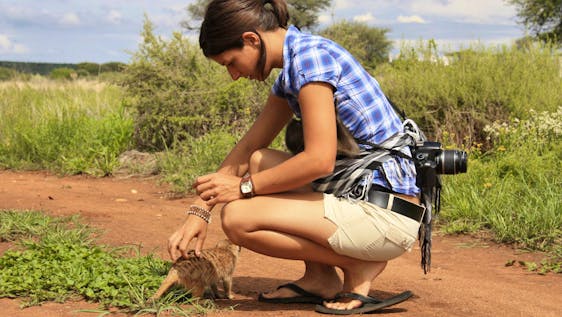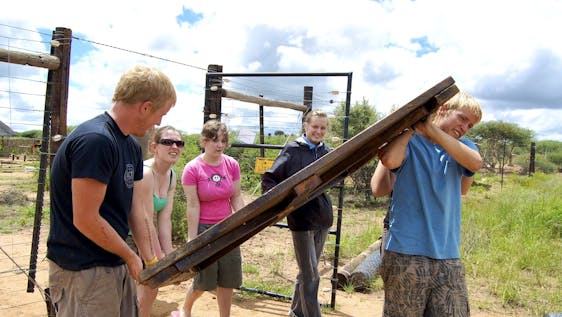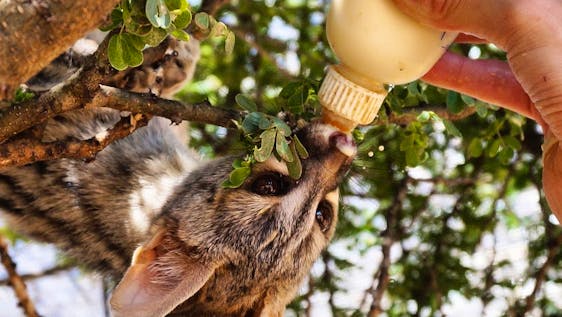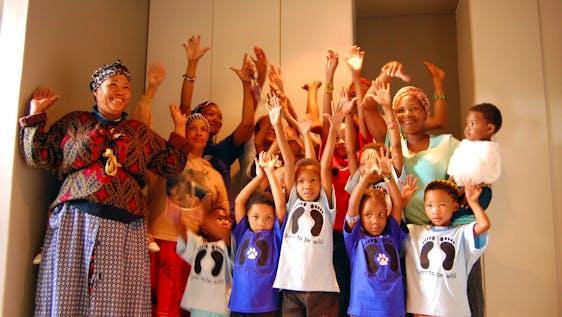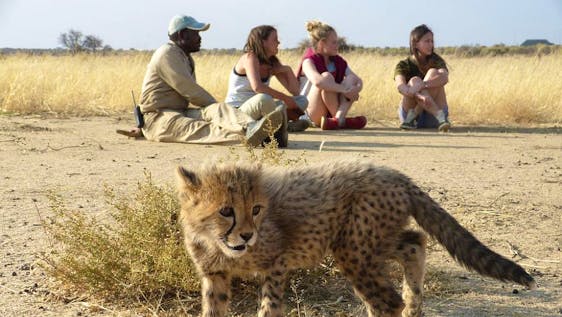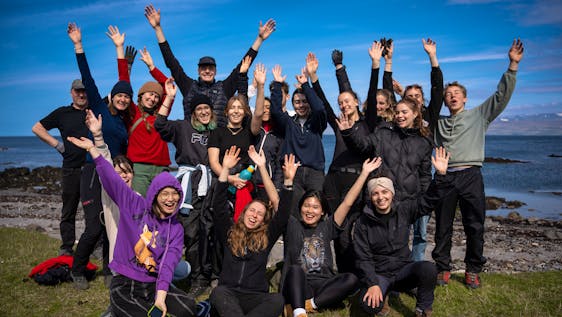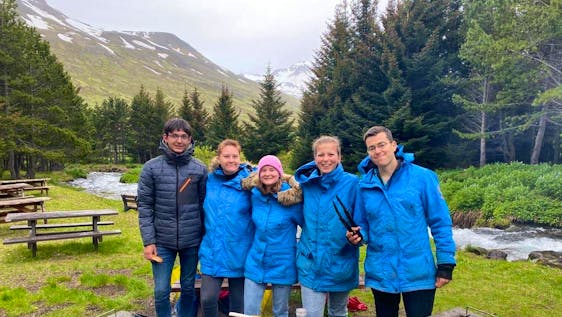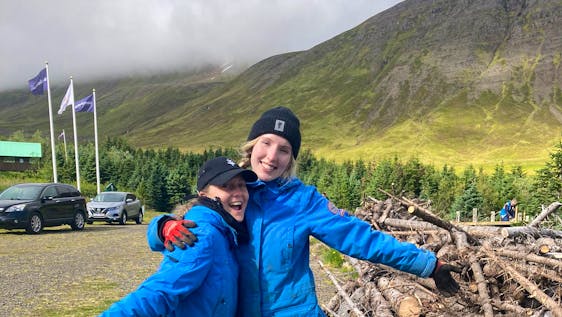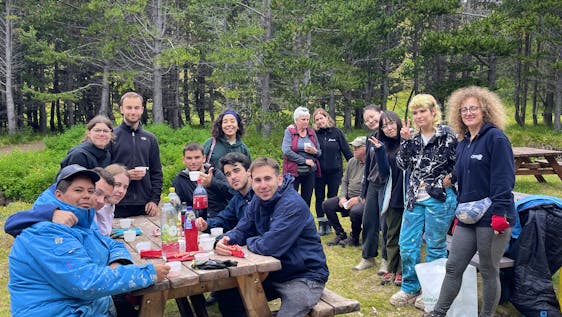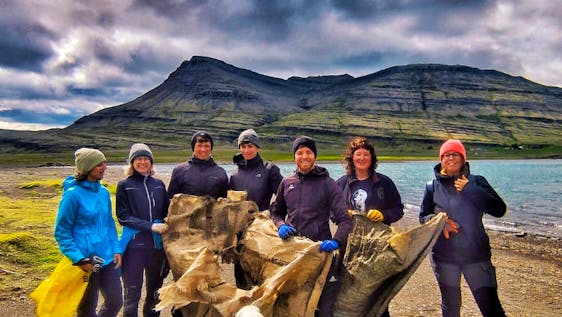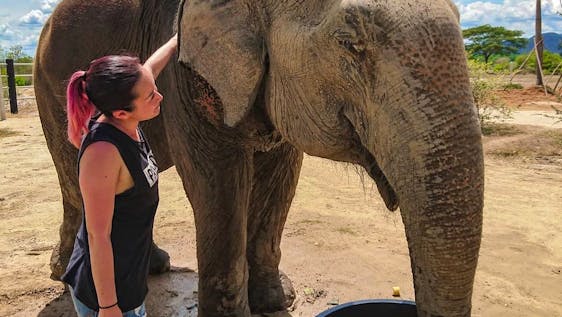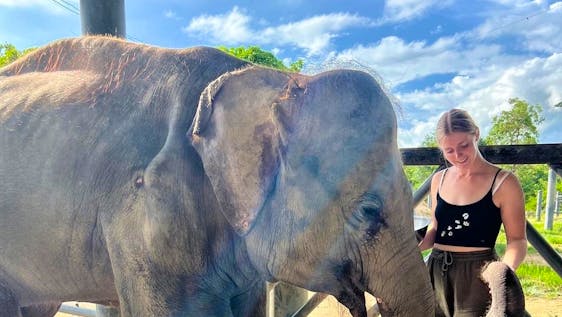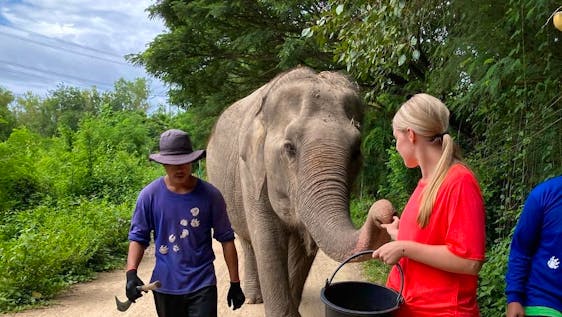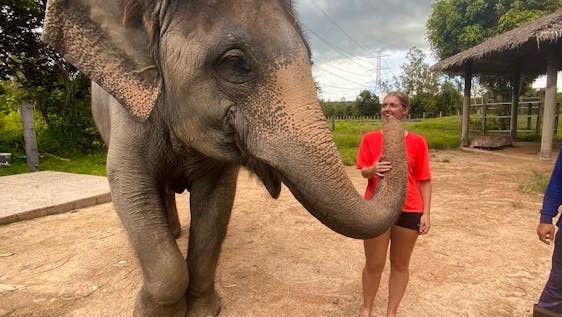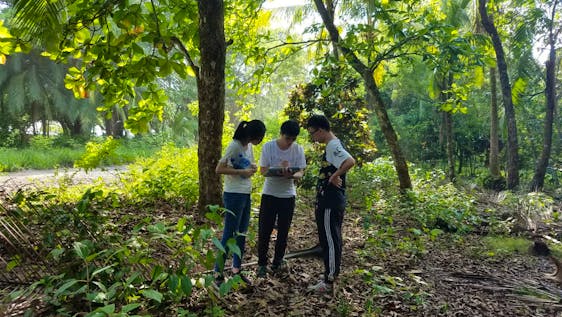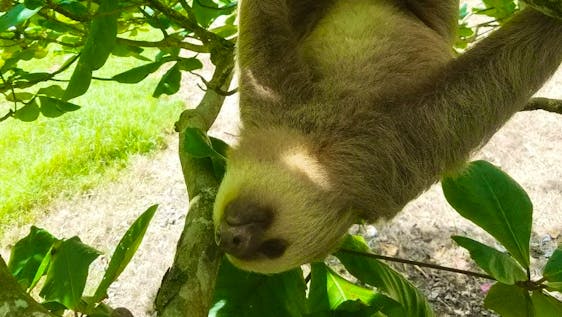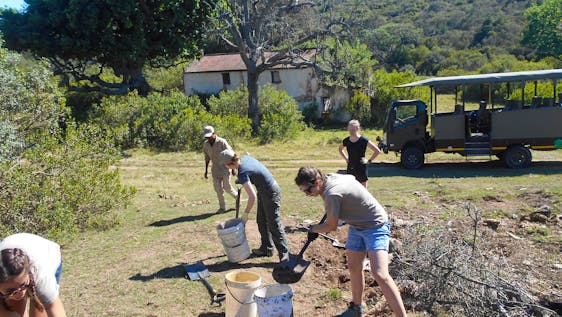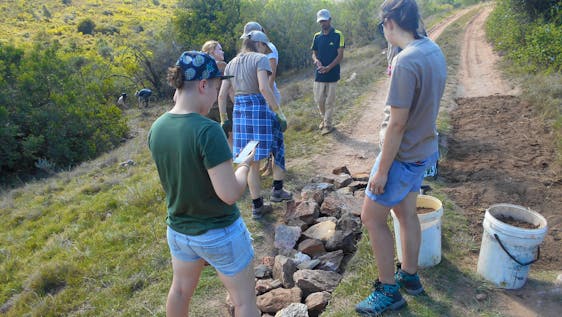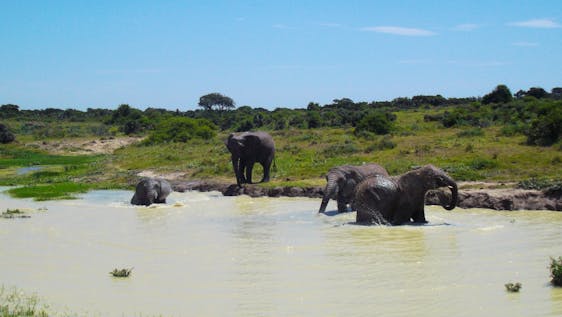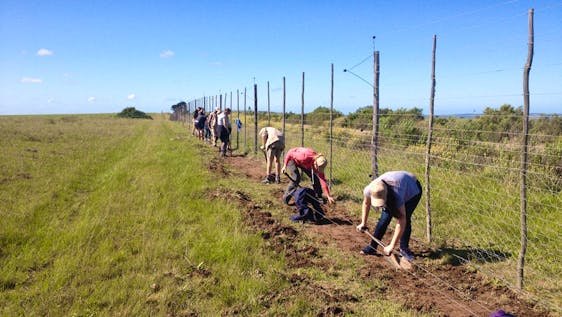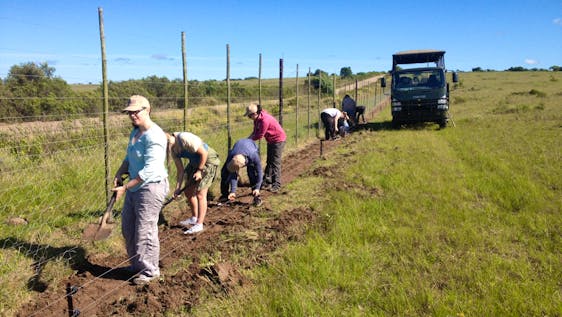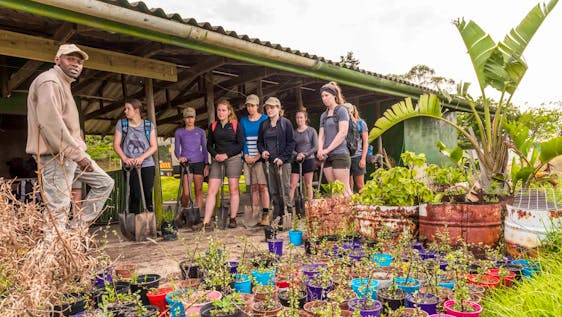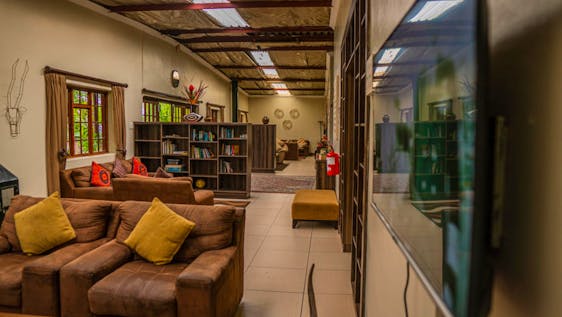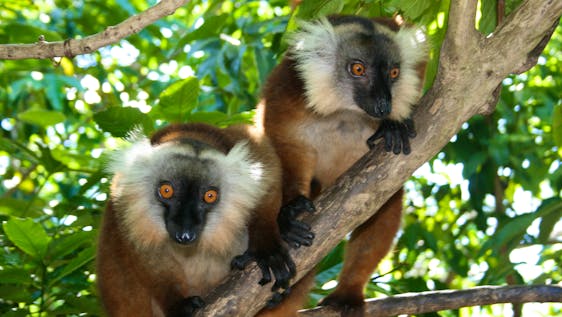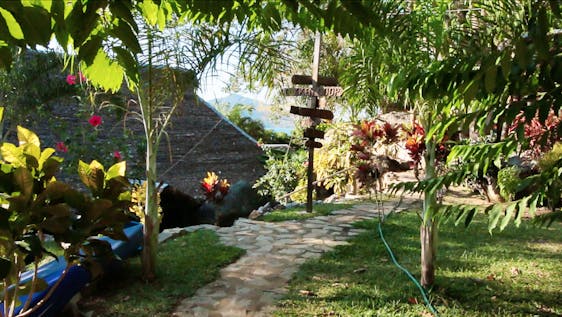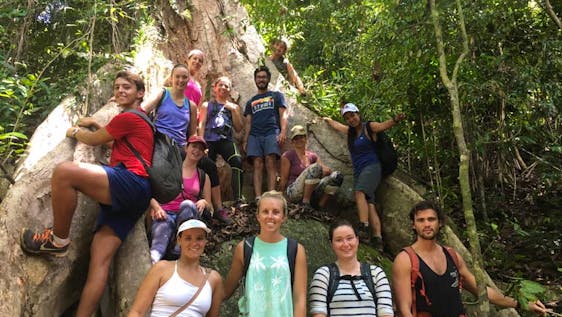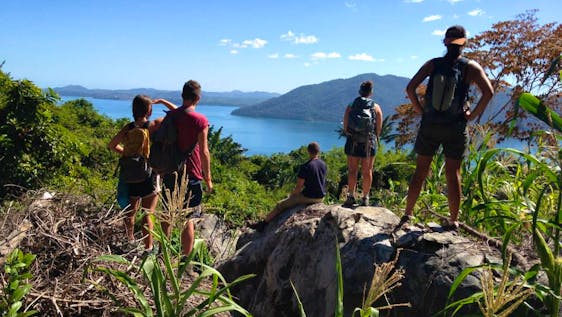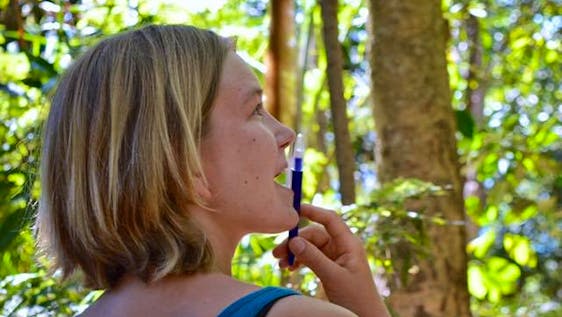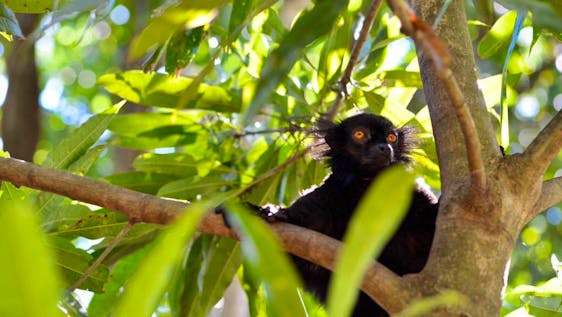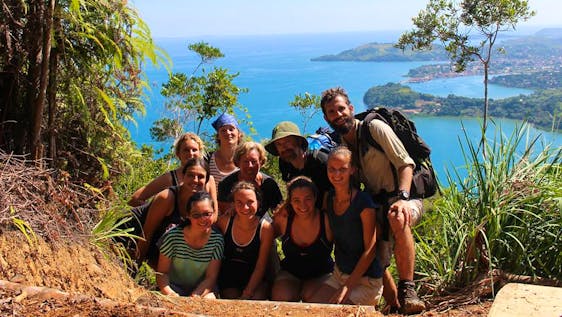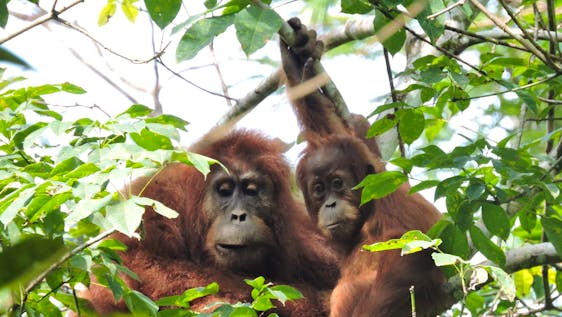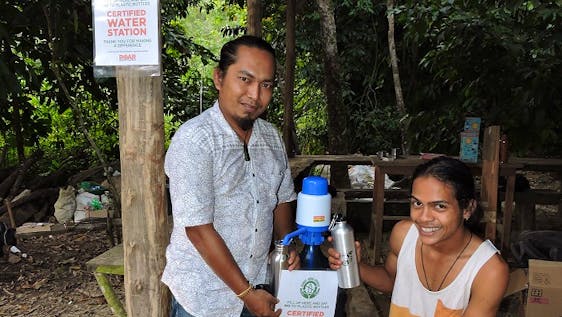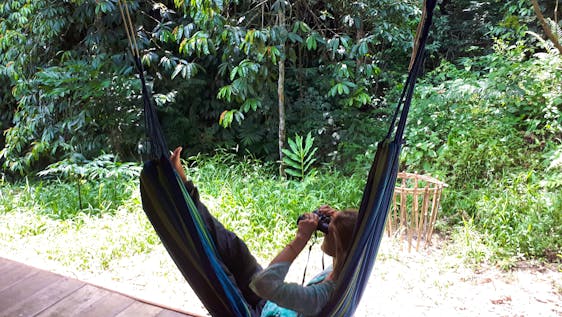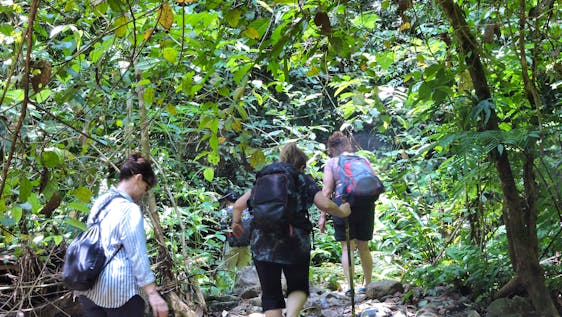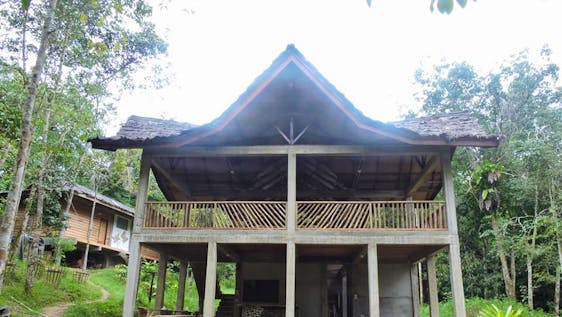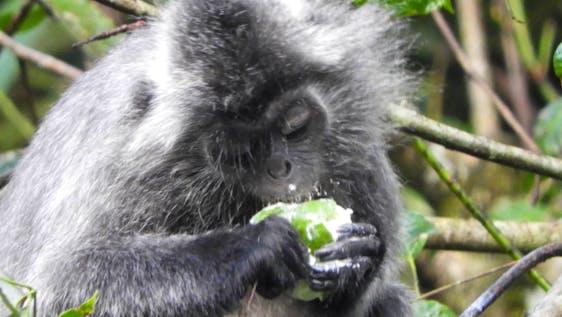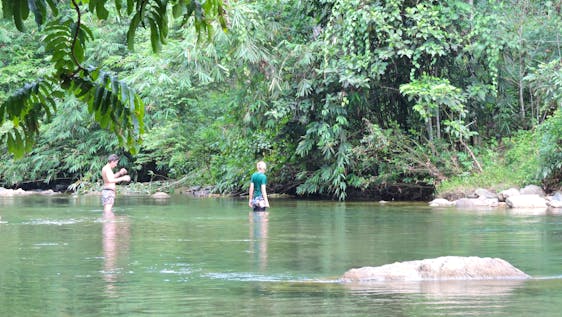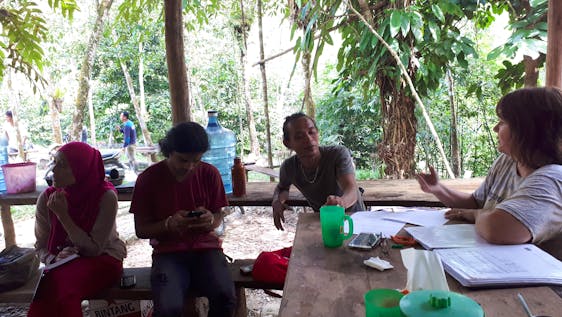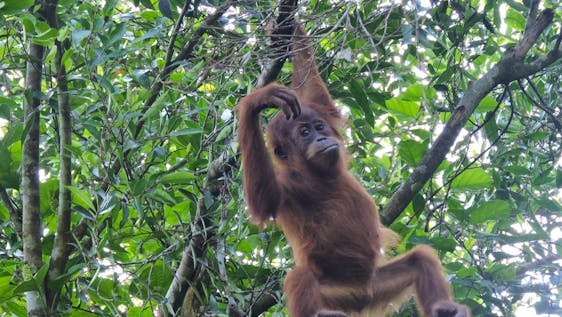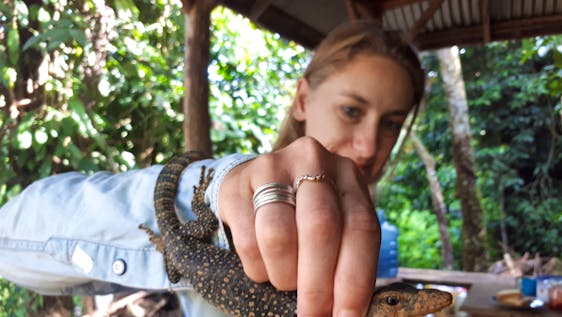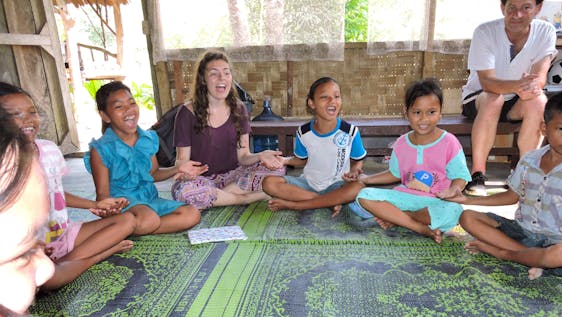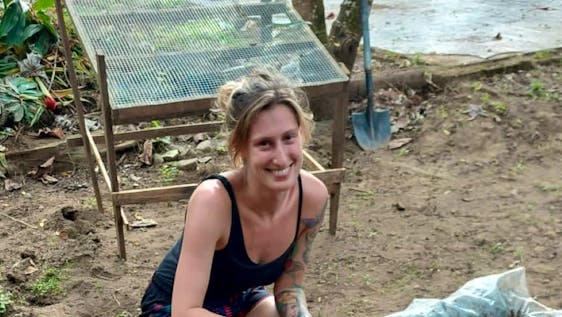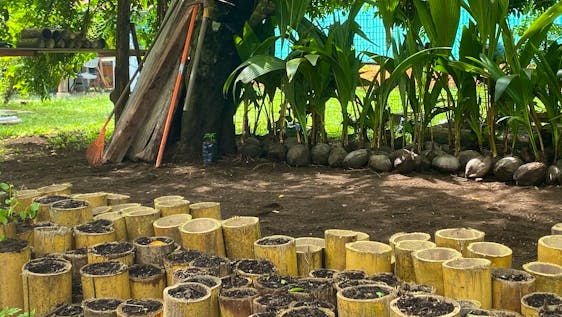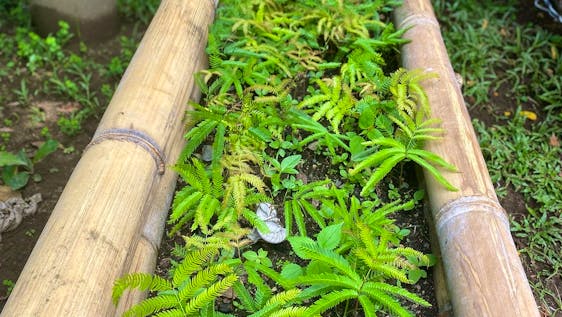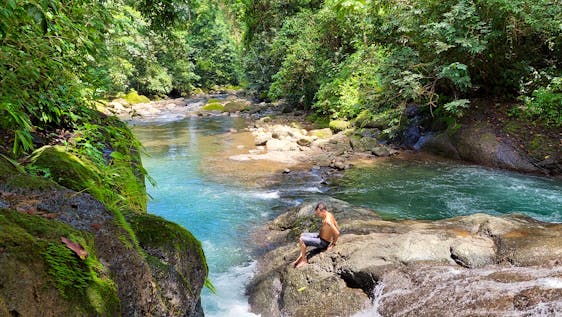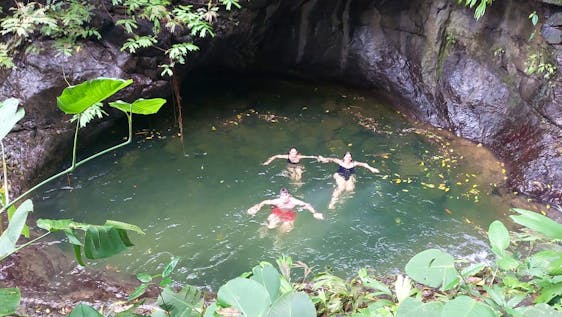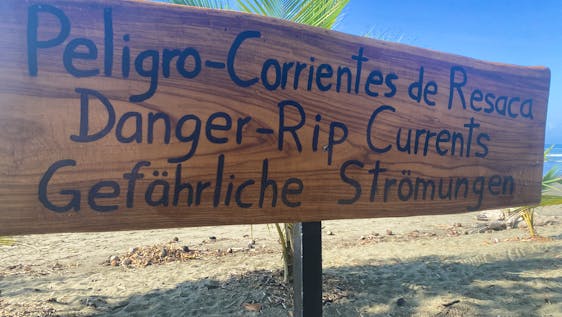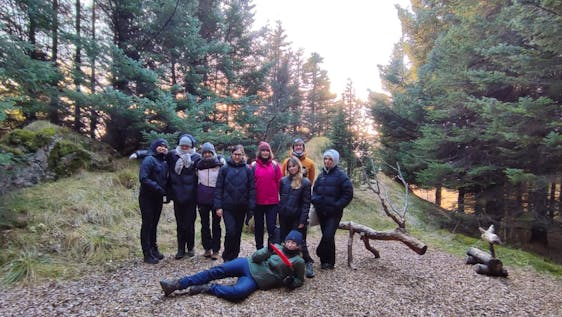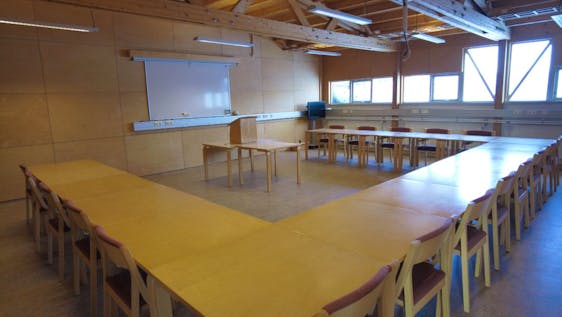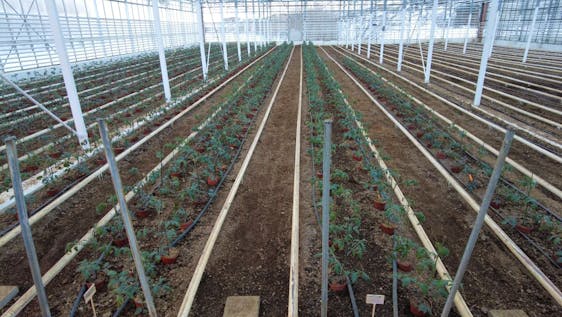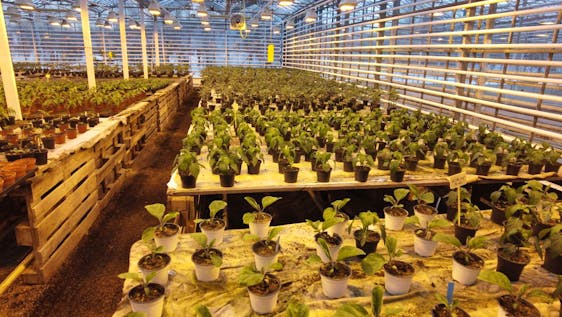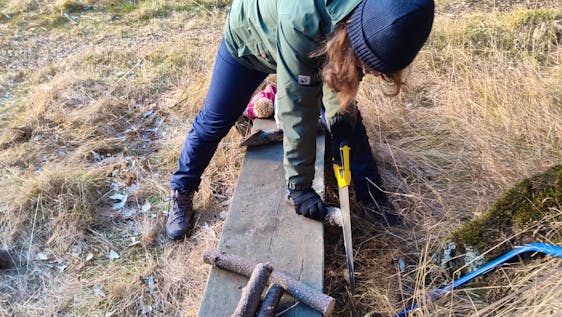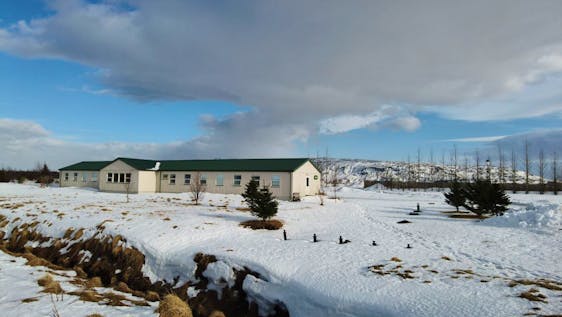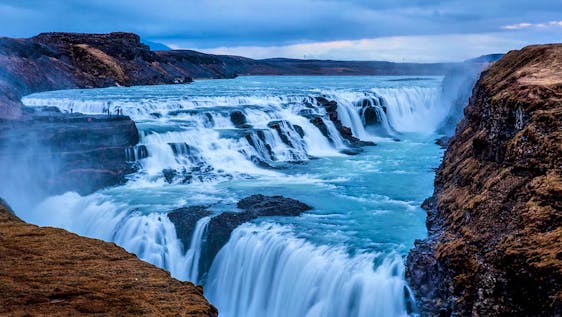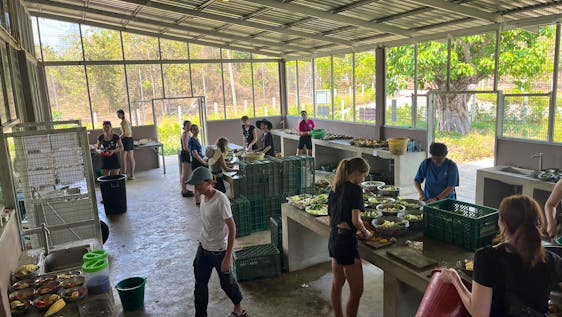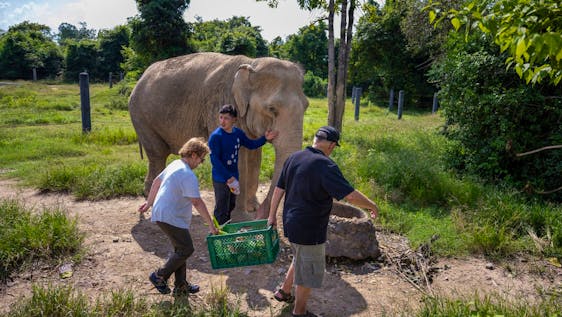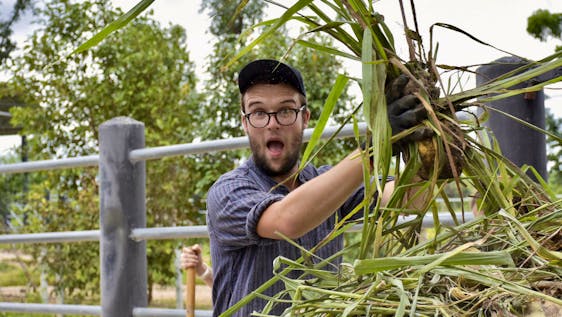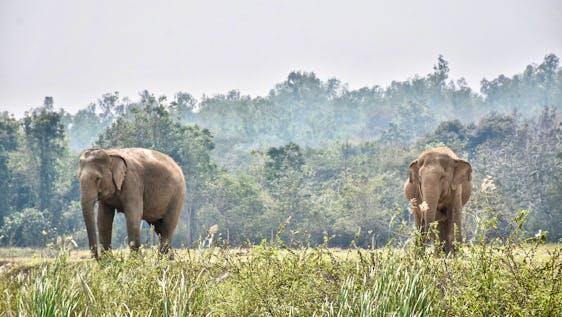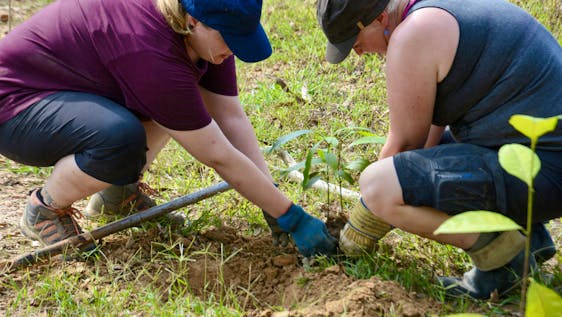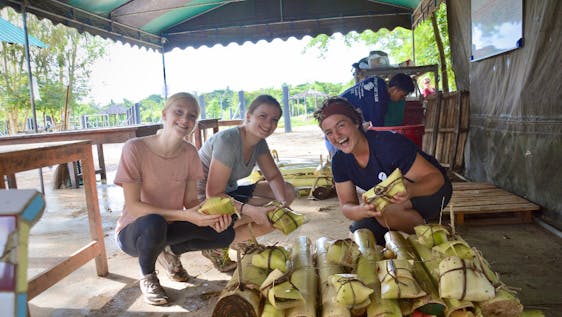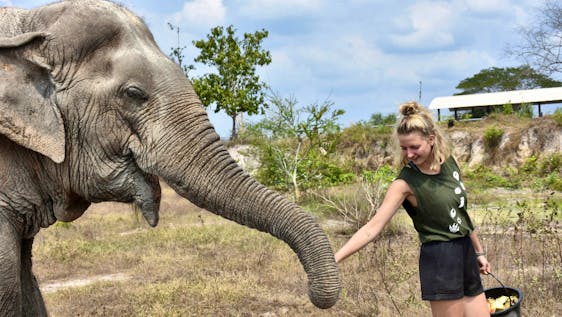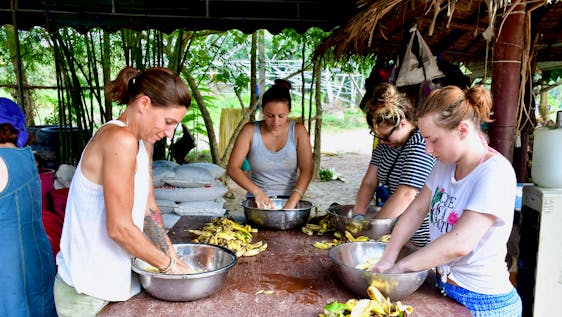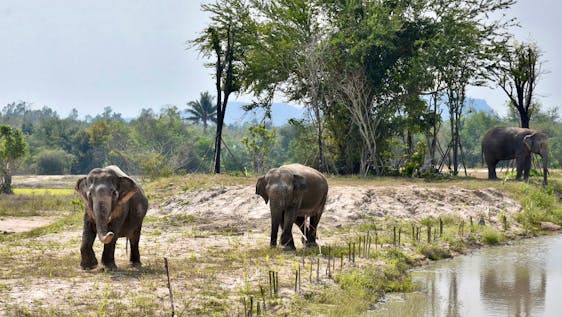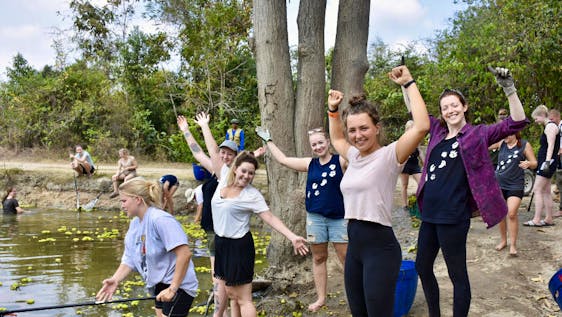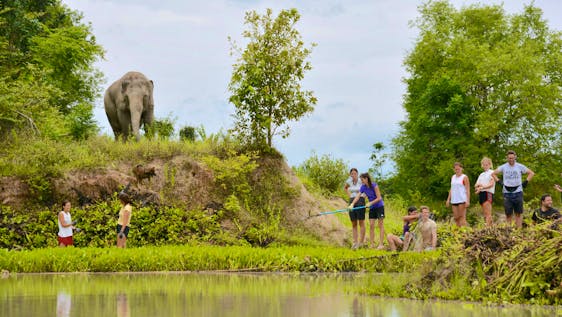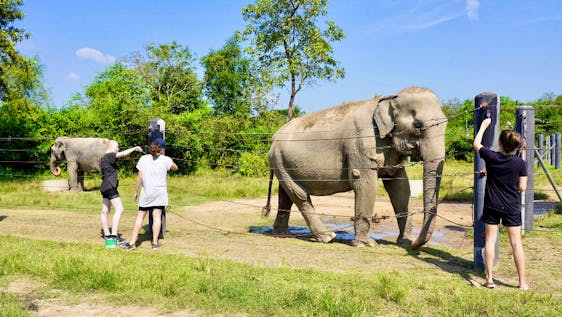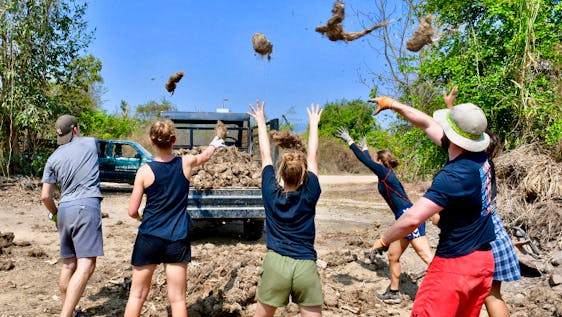- Around 1.6 billion people depend on forests for their livelihood. This includes some 70 million indigenous people
- Forests are home to more than 80 per cent of all terrestrial species of animals, plants and insects
Life On Land
Life On Land
Life On Land
Forests cover 30 per cent of the Earth's surface and in addition to providing food security and shelter, forests are key to combating climate change, protecting biodiversity and the homes of the indigenous population. Thirteen million hectares of forests are being lost every year while the persistent degradation of drylands has led to the desertification of 3.6 billion hectares.
Deforestation and desertification - caused by human activities and climate change - pose major challenges to sustainable development and have affected the lives and livelihoods of millions of people in the fight against poverty. Efforts are being made to manage forests and combat desertification.
What's the goal here?
To sustainably manage forests, combat desertification, halt and reverse land degradation, and halt biodiversity loss.
Facts & figures
Forests
Desertification
- 2.6 billion people depend directly on agriculture, but 52 per cent of the land used for agriculture is moderately or severely affected by soil degradation
- As of 2008, land degradation affected 1.5 billion people globally
- Arable land loss is estimated at 30 to 35 times the historical rate
- Due to drought and desertification each year 12 million hectares are lost (23 hectares per minute), where 20 million tons of grain could have been grown
- 74 per cent of the poor are directly affected by land degradation globally
Biodiversity
- Of the 8,300 Animal breeds known, 8 per cent are extinct and 22 per cent are at risk of extinction
- Of the over 80,000 tree species, less than 1 per cent have been studied for potential use
- Fish provide 20 per cent of Animal protein to about 3 billion people. Only ten species provide about 30 per cent of marine capture fisheries and ten species provide about 50 per cent of aquaculture production
- Over 80 per cent of the human diet is provided by plants. Only three cereal crops - rice, maize and wheat - provide 60 per cent of energy intake
- As many as 80 per cent of people living in rural areas in developing countries rely on traditional plant-based medicines for basic healthcare
- Micro-organisms and invertebrates are key to ecosystem services, but their contributions are still poorly known and rarely acknowledged
Why?
Forests cover nearly 31 per cent of our planet's land area. From the air we breathe, to the water we drink, to the food we eat-forests sustain us. Think about it. Around 1.6 billion people depend on forests for their livelihood. Almost 75 per cent of the world's poor are affected directly by land degradation. Did you know that forests are home to more than 80 per cent of all terrestrial species of animals, plants and insects? And of the 8,300 Animal breeds known, 8 per cent are extinct and 22 per cent are at risk of extinction. Biodiversity and the ecosystem services it underpins can also be the basis for climate change adaptation and disaster risk reduction strategies as they can deliver benefits that will increase the resilience of people to the impacts of climate change. Forests and nature are also important for recreation and mental well-being. In many cultures, natural landscapes are closely linked to spiritual values, religious beliefs and traditional teachings.
What would it cost to correct the problem?
The UN Forum on Forests Secretariat estimates that achieving sustainable forest management on a global scale would cost US$70-$160 billion per year. The Convention on Biological Diversity estimates that US$150-$440 billion per year is required to halt the loss of biodiversity at a global level by the middle of this century.
What would it cost if we don't correct the problem?
Biodiversity delivers multiple services from local to global levels, while responses to biodiversity loss range from emotional to utilitarian. For instance, insects and other pollen-carriers are estimated to be worth more than US$200 billion per year to the global food economy. Three-quarters of the top-ranking global prescription drugs contain components derived from plant extracts, which would be threatened. Natural disasters caused by ecosystems disrupted by human impact and climate change already cost the world more than US$300 billion per year. Deforestation and forest degradation results in loss of habitat for all species, a decrease in freshwater quality, an increase in soil erosion, land degradation and higher emissions of carbon into the atmosphere. In short, not taking action on forests impacts both the health of the planet and our communities.
What can we do?
Inevitably, we change the ecosystems we are a part of through our presence-but we can make choices that either affirm diversity or devalue it. Some things we can do to help include recycling, eating a locally-based diet that is sustainably sourced, consuming only what we need, and limiting energy usage through efficient heating and cooling systems. We must also be respectful toward wildlife and only take part in ecotourism opportunities that are responsibly and ethically run in order to prevent wildlife disturbance. Well-managed protected areas support healthy ecosystems, which in turn keep people healthy. It is therefore critical to secure the involvement of the local communities in the development and management of these protected areas.
Where are volunteer projects that need my help?
Discover related Sustainable Development Goals
The Sustainable Development Goals aim to end poverty, protect the planet, and ensure prosperity for all. As such, the 17 SDGs and its associated 169 targets do not stand alone, but are are interconnected. The key to success on one will involve tackling issues more commonly associated with another. If you are interested in supporting a cause addressing to the goal {sdg.name}, you might also be interested in the related goals No Poverty, Good Health And Well-Being, Clean Water And Sanitation, Decent Work And Economic Growth, Industry, Innovation And Infrastructure, Sustainable Cities And Communities and Responsible Consumption And Production.
Please visit the website of the United Nations to find out more about Goal 15 Life On Land and other Sustainable Development Goals.
Source: United Nations

 Activities
Activities
 Animal
Animal
 Bird Conservation
Bird Conservation
 Wildlife Conservation
Wildlife Conservation
 Sloth Sanctuary
Sloth Sanctuary
 Monkey Conservation
Monkey Conservation
 Americas
Americas
 Central America
Central America
 Costa Rica
Costa Rica
 Vegan
Vegan
 Elephant Conservation
Elephant Conservation
 Hotspots
Hotspots
 Rhino Conservation
Rhino Conservation
 Animal Sanctuary
Animal Sanctuary
 Waste Reduction
Waste Reduction
 Parrot
Parrot
 Africa
Africa
 Leopardus Conservation
Leopardus Conservation
 Ocelot
Ocelot
 Macaw
Macaw
 Lion Conservation
Lion Conservation
 Reptile Conservation
Reptile Conservation
 Planting Trees
Planting Trees
 Southern Africa
Southern Africa
 Sea Turtle Conservation
Sea Turtle Conservation
 Howler Monkeys
Howler Monkeys
 Bear Conservation
Bear Conservation
 Giraffe Conservation
Giraffe Conservation
 South Africa
South Africa
 Families with small kids
Families with small kids
 Anti Poaching
Anti Poaching
 Antelope Conservation
Antelope Conservation
 Southwest African Lion
Southwest African Lion
 Crocodile
Crocodile
 African Elephant
African Elephant
 White Rhino
White Rhino
 Bush Elephant
Bush Elephant
 Asia
Asia
 Leopard Conservation
Leopard Conservation
 African Leopard
African Leopard
 Plastic Reduction
Plastic Reduction
 South East Asia
South East Asia
 Capuchin Monkey
Capuchin Monkey
 Green Sea Turtle
Green Sea Turtle
 Europe
Europe
 Ocean Cleaning
Ocean Cleaning
 Beach Cleaning
Beach Cleaning
 Toucan
Toucan
 Environment
Environment
 Southern Giraffe
Southern Giraffe
 Cheetah Conservation
Cheetah Conservation
 Animal Shelter
Animal Shelter
 Leatherback Turtle
Leatherback Turtle
 Hyena Conservation
Hyena Conservation
 Zebra Conservation
Zebra Conservation
 Conservation Work
Conservation Work
 Spotted Hyena
Spotted Hyena
 Horse
Horse
 Macaque
Macaque
 Tiger Conservation
Tiger Conservation
 Yoga
Yoga
 Indonesia
Indonesia
 Eastern Africa
Eastern Africa
 National Park
National Park
 Eagle
Eagle
 Dog
Dog
 South African Cheetah
South African Cheetah
 Cockatoo
Cockatoo
 Street Animals
Street Animals
 Mountain Zebra
Mountain Zebra
 Northern Europe
Northern Europe
 Bali
Bali
 Buffalo Conservation
Buffalo Conservation
 African Buffalo
African Buffalo
 Premium
Premium
 Iceland
Iceland
 Safari
Safari
 Southern Europe
Southern Europe
 Asian Elephant
Asian Elephant
 Kudu
Kudu
 Impala
Impala
 Primate Conservation
Primate Conservation
 Bushbuck
Bushbuck
 Thailand
Thailand
 South America
South America
 Reykjavik
Reykjavik
 Zimbabwe
Zimbabwe
 Baboon
Baboon
 Scouts
Scouts
 Reforestation
Reforestation
 Northwest African Cheetah
Northwest African Cheetah
 Voluntourism
Voluntourism
 Volunteer and Travel
Volunteer and Travel
 Caracal Conservation
Caracal Conservation
 Hawksbill Turtle
Hawksbill Turtle
 Marine Life
Marine Life
 Kangaroo Conservation
Kangaroo Conservation
 Spain
Spain
 Horse Sanctuary
Horse Sanctuary
 Intern Abroad
Intern Abroad
 Cats
Cats
 Madagascar
Madagascar
 Caracal
Caracal
 Southern Asia
Southern Asia
 Meerkat
Meerkat
 Meerkat Conservation
Meerkat Conservation
 Sri Lanka
Sri Lanka
 Veterinary Training
Veterinary Training
 Tortoise Conservation
Tortoise Conservation
 Nosy Komba
Nosy Komba
 Namibia
Namibia
 Greece
Greece
 African Wild Dog Conservation
African Wild Dog Conservation
 Great Apes Conservation
Great Apes Conservation
 Plant Conservation
Plant Conservation
 Spanish Courses
Spanish Courses
 Language Course
Language Course
 Orangutan
Orangutan
 Plains Zebra
Plains Zebra
 Port Elizabeth
Port Elizabeth
 Jaguar Conservation
Jaguar Conservation
 Lemur
Lemur
 Bangkok
Bangkok
 Peru
Peru
 Ecuador
Ecuador
 Owl
Owl
 Spider Monkey
Spider Monkey
 Ecological Farming
Ecological Farming
 Agriculture
Agriculture
 Windhoek
Windhoek
 Wallaby
Wallaby
 North America
North America
 Oceania
Oceania
 Bilbao
Bilbao
 Marmoset
Marmoset
 Australia and New Zealand
Australia and New Zealand
 Surfing
Surfing
 Australia
Australia
 Amazon Rainforest
Amazon Rainforest
 Sumatra
Sumatra
 Otter Conservation
Otter Conservation
 Canada
Canada
 Marine Conservation
Marine Conservation
 Kangaroo
Kangaroo
 Koala Conservation
Koala Conservation
 Koala
Koala
 Wombat
Wombat
 Wombat Conservation
Wombat Conservation
 Possum Conservation
Possum Conservation
 Anteater Conservation
Anteater Conservation
 Mongoose Conservation
Mongoose Conservation
 Mongoose
Mongoose
 Crete
Crete
 Giant Tortoise
Giant Tortoise
 Kathmandu
Kathmandu
 Galapagos
Galapagos
 Sri Lankan Elephant
Sri Lankan Elephant
 Elephant Research
Elephant Research
 Chiang Mai
Chiang Mai
 Jackal Conservation
Jackal Conservation
 Cusco
Cusco
 Delhi
Delhi
 Himalaya
Himalaya
 Monastery
Monastery
 Jaipur
Jaipur
 Tapir
Tapir
 Malaga
Malaga
 Giant Otter
Giant Otter
 Brazil
Brazil
 Vervet Monkey
Vervet Monkey
 Borneo
Borneo
 Diving
Diving
 Squirrel Monkey
Squirrel Monkey
 Coral Reef
Coral Reef
 Manatee
Manatee
 Civet
Civet
 Gibbon
Gibbon
 Western Africa
Western Africa
 Diving certificate
Diving certificate
 Victoria Falls
Victoria Falls
 Philippines
Philippines
 PADI Divemaster
PADI Divemaster
 Ghana
Ghana
 Wildcat Conservation
Wildcat Conservation
 Husky
Husky
 Nyala
Nyala
 Warthog Conservation
Warthog Conservation
 Duiker
Duiker
 Insect Conservation
Insect Conservation
 Butterfly Conservation
Butterfly Conservation
 Snorkeling
Snorkeling
 Indian Elephant
Indian Elephant
 British Columbia
British Columbia
 Cambodia
Cambodia
 Eurasian Otter
Eurasian Otter
 Elusive Pangolin
Elusive Pangolin
 Wolf Conservation
Wolf Conservation
 Grey Wolf
Grey Wolf
 Olive Ridley Turtle
Olive Ridley Turtle
 Tanzania
Tanzania
 Waterbuck
Waterbuck
 Blesbok
Blesbok
 Eastern Asia
Eastern Asia
 Chameleon
Chameleon
 Malaysia
Malaysia
 Athens
Athens
 Binturong Conservation
Binturong Conservation
 Indigenous cultures
Indigenous cultures
 Tenerife
Tenerife
 Chile
Chile
 Cape Town
Cape Town
 Nosy Be
Nosy Be
 Photography Internship
Photography Internship
 Mongolia
Mongolia
 United Kingdom
United Kingdom
 Arusha
Arusha
 Queensland
Queensland
 Dolphin Conservation
Dolphin Conservation
 Spur-thighed Tortoise
Spur-thighed Tortoise
 Horse Therapy
Horse Therapy
 Honey Badger
Honey Badger
 Community
Community
 Eastern Europe
Eastern Europe
 United States Of America
United States Of America
 Shark Conservation
Shark Conservation
 Italy
Italy
 Hungary
Hungary
 Hippo Conservation
Hippo Conservation
 Kenya
Kenya
 Loggerhead Turtle
Loggerhead Turtle
 Croatia
Croatia
 Bottlenose Dolphin
Bottlenose Dolphin
 Falcon
Falcon
 Florida
Florida
 Blacktip Reef Shark
Blacktip Reef Shark
 Eagle Ray
Eagle Ray
 Seychelles
Seychelles
 Mexico
Mexico
 Laos
Laos
 Kruger National Park
Kruger National Park
 Split
Split
 Bat Conservation
Bat Conservation
 Tubulidentata Conservation
Tubulidentata Conservation
 Aardvark
Aardvark
 Transvaal Lion
Transvaal Lion
 Guatemala
Guatemala
 Golden Jackal
Golden Jackal
 Amur Tiger
Amur Tiger
 Side-striped Jackal
Side-striped Jackal
 NGO Support
NGO Support
 Tamarin
Tamarin
 Social Work
Social Work
 Portugal
Portugal
 Marketing and IT
Marketing and IT
 Construction
Construction
 Sugar Glider
Sugar Glider
 Puerto Viejo
Puerto Viejo
 Ecological Building
Ecological Building
 Patas Monkey
Patas Monkey
 Lisbon
Lisbon
 Hiking
Hiking
 Building Schools
Building Schools
 Puerto Escondido
Puerto Escondido
 Rome
Rome
 Chimpanzee
Chimpanzee
 African Penguin
African Penguin
 Nepal
Nepal
 Bolivia
Bolivia
 Middle Africa
Middle Africa
 Gorilla
Gorilla
 Cameroon
Cameroon
 South Korea
South Korea
 Seoul
Seoul
 Oaxaca
Oaxaca
 Kumasi
Kumasi
 Cougar Conservation
Cougar Conservation
 Melanesia
Melanesia
 Fiji
Fiji
 Antigua
Antigua
 Ireland
Ireland
 Zanzibar
Zanzibar
 Western Asia
Western Asia
 Turkey
Turkey
 Easter Island
Easter Island
 San Jose
San Jose
 Hawaii
Hawaii
 Cape Verde
Cape Verde
 Barcelona
Barcelona
 Colombia
Colombia
 Leopard Shark
Leopard Shark
 Nairobi
Nairobi
 India
India
 Johannesburg
Johannesburg
 Tasmania
Tasmania
 Tasmanian Devil
Tasmanian Devil
 Knysna
Knysna
 Mombasa
Mombasa
 Whale Conservation
Whale Conservation
 Energy and Water
Energy and Water
 Northern Africa
Northern Africa
 Morocco
Morocco
 Education
Education
 New Zealand
New Zealand
 Buenos Aires
Buenos Aires
 Argentina
Argentina
 Cairns
Cairns
 Rwanda
Rwanda
 Caiman
Caiman
 Limon
Limon
 Swaziland
Swaziland
 Whale Shark
Whale Shark
 Ubud
Ubud
 Primary School
Primary School
 Paraguay
Paraguay
 Zambia
Zambia
 Romania
Romania
 Puerto Jimenez
Puerto Jimenez
 Beehive
Beehive
 Alaska
Alaska
 Whitetip Reef Shark
Whitetip Reef Shark
 Machu Picchu
Machu Picchu
 Manuel Antonio
Manuel Antonio
 Youth Teaching
Youth Teaching
 Serengeti
Serengeti
 Sloth Bear
Sloth Bear
 Indian Leopard
Indian Leopard
 Malawi
Malawi
 Everest Trekking
Everest Trekking
 Caribbean
Caribbean
 NGO Management
NGO Management
 Dominican Republic
Dominican Republic
 Porto
Porto
 Plettenberg Bay
Plettenberg Bay
 Great White Shark
Great White Shark
 Southern Right Whale
Southern Right Whale
 Orca
Orca
 Humpback Whale
Humpback Whale
 Musanze
Musanze
 Jamaica
Jamaica
 Kolkata
Kolkata
 Günthers Dik-Dik
Günthers Dik-Dik
 Coffee
Coffee
 Oryx
Oryx
 Elderly Care
Elderly Care
 Refugees
Refugees
 Working with Seniors
Working with Seniors
 Grenada
Grenada
 Quito
Quito
 Norway
Norway
 Guyana
Guyana
 Hammerhead Shark
Hammerhead Shark
 Tanzanian Cheetah
Tanzanian Cheetah
 Bali Starling
Bali Starling
 Volleyball
Volleyball
 Honduras
Honduras
